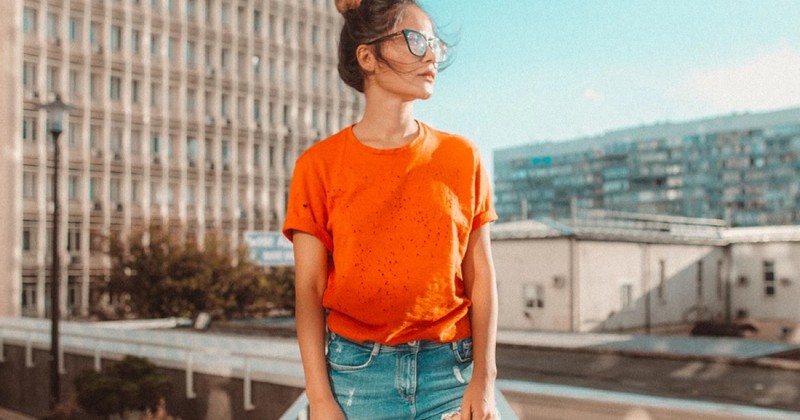What does the color orange mean in psychology?

This color results from the mixture of others, and is related to many symbols and feelings.
Orange is one of the secondary colors that is associated with exoticism, fun and enthusiasm. But not only this; color psychology has proposed different meanings and effects according to the specific shade of orange, as well as different uses.
In this article we will see what is and what the color orange means according to color psychology, as well as some uses in color psychology.as well as some uses in consumer psychology.
The psychology of color
The relationship between colors and our mental and subjective processes has long been studied, not only by psychology, but also by philosophy, physics and other areas of knowledge.
Among the proposals that have emerged from these studies is the idea that colors are an active part of our environment, which means that they are endowed with a series of meanings. The latter both shape and reflect our perceptions and emotions. reflect our perceptions and emotions..
Moreover, they are meanings that have emerged from our cultural interaction with colors. That is, as colors have been defined by different human societiesIn other words, as colors have been defined by different human societies in relation to the phenomena of nature, each one has acquired a special meaning, as well as the possibility of activating emotions, thoughts and psychophysical effects.
Pioneers in this field are the studies carried out in the early 1800s by the German novelist and scientist Johann Wolfgang von Goethe, who took up Newton's theories on the decomposition of light to analyze the moral effects of colors, as well as the intellectual, traditional and status characteristics according to the context.
In contemporary times, the studies of Eva Heller are recognized, who tells us, for example, that the color orange became popular in Europe until migration and wars brought the fruit from the East. She also proposes that all colors have not only a cultural but also a psychological meaningIt is also a meaning that can vary if the colors are combined with each other.
How is orange obtained?
By decomposing sunlight in a glass prism. different wavelengths are generated which in turn produce a range of colors: violet, blue, green, yellow, orange and red. From these are derived three combinations of colored lights that can recreate white light. These lights are green, blue-violet and red-orange, which are considered primary colors. This is known as the Law of Mixing the Colors of Light, or also as the RGB (Red, Green, Blue) System, the Additive Synthesis, or the Trichrome Process.
However, there is another way of analyzing colors. This is the material law of color, also called the CMYK (Cyan, Magenta, Yellow, Key) system or Four-color process, which is the law that has made it possible to generate inks and reproduce color images, which is why it is the most widely used.
The primary colors red, yellow and blue are derived from this law. The latter are the only ones that are not produced from the mixture of others, but they are the only ones that are not produced from the mixture of others, but they are the only ones that are produced from the mixture of others. can be mixed together to produce all the shades that the human eye can appreciate. that the human eye can appreciate.
Violet, green and orange are known as secondary colors, since they are obtained from the mixture of the primary colors. As with other colors, orange has a wide chromatic range, that is, it is composed of different shades, and each of them can represent different elements.
What does the color orange mean?
The different shades of orange have been linked to personality traits, attitudes, motivations and emotions.. It mainly represents joy, enthusiasm and fun. It has also been related to the exotic, which does not please everyone.
It is related to sociability, originality, extraversion, activity or enthusiasm and closeness. On the other hand, some shades of orange represent the excessively flashy, a frivolous and conventional attitude; and other shades also represent inappropriateness and danger.
Likewise, orange has been associated with lust and sensuality. Its combination with gray evokes both discretion and extroversion.and the mixture between orange and white evokes the striking and at the same time the moderate. The latter is based on Heller's theory that there is a specific combination of colors that has opposite and contradictory effects on a psychological level. In cultural terms it has been used frequently in Buddhism and in relation to Protestantism.
In consumer psychology
Something that psychology has studied is how the different brands base their communication with the consumer through a symbology of shapes and colors. They start from the idea that the use of colors determines to a great extent the success of the message, since colors evoke different emotions according to the characteristics of the target audience. That is to say that color even influences our decisions, which is why it has had important implications in consumer psychology.
Specifically, in consumer psychology, orange, as well as red and yellow, have been associated with appetite and taste stimulation.They have been used to advertise different foods and restaurant chains.
Related to this, psychophysical color psychology has found a relationship between the intense color orange and the experience of sweet taste. Warm colors such as yellow, red and orange elicit a positive purchase response because of their association with optimism. their association with optimism.
(Updated at Apr 13 / 2024)